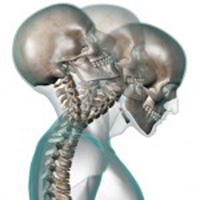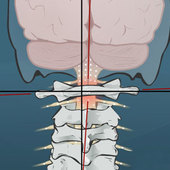Winter is here, and with it comes all the tasks of winterizing our homes and cars, but have you ever thought about winterizing your body? With the increased risk of slips and falls and motor vehicle collisions, we often see a rise in whiplash-type injuries during this time of year. Here is what you need to know to protect yourself this coming season:
Whiplash Quick Facts
- A whiplash injury is one of the most common types of neck injuries. Our head and neck have a large range of motion, and with this comes an inherent lack of stability. Because of this lack of stability, the neck is predisposed to a greater risk of injury when large forces are applied to the body, such as in a whiplash injury.

- Whiplash is a mechanical injury to the neck caused by the rapid acceleration and deceleration of the body. The ligaments of the neck can support an average of 45-88 lbs of force; a whiplash injury sustained in a 15 km/hr collision can introduce up to 160 lbs of force to the body! This force is equivalent to catching a 200 lb bag of cement dropped from a second storey window which can cause an injurious sprain of the ligaments and supporting structures of the neck.
- Though whiplash injuries are common in motor vehicle collisions, they can also be sustained in sports accidents, amusement park rides, and everyday slips and falls.
- Common symptoms of whiplash injuries include neck pain, shoulder pain, jaw pain, headaches, dizziness, and numbness and tingling in the arms.
Whiplash Myths
Myth: Less damage to the vehicle means less chance of injury.
Fact: It has been found that less damage to the vehicle means that more energy from the collision was transmitted to the occupants of the vehicle. This makes sense when you go back to high school physics and the law of conservation of energy, which states: ‘Energy can neither be created nor destroyed but only transferred from one form to another’. Vehicles that sustain more damage in a collision will absorb more of the energy on impact, and thus less energy will be transferred to the occupants.
Myth: Being relaxed at the time of impact reduces the chance of injury.
Fact: It takes about 200 milliseconds for the muscles in your neck to engage in a guarding mechanism to stabilize the joints in your neck. Initial damage from a whiplash injury sustained in a motor vehicle collision occurs between 50-100 milliseconds – before your muscles have even had a chance to activate! Ligamentous/neck sprain injury occurs so early in the collision that being in a relaxed state can actually augment the initial injury.
Myth: If an injury was sustained in a collision, symptoms will appear immediately.
Fact: Symptoms of a whiplash injury may appear soon after the impact or be delayed by hours or up to a couple of days. Whiplash soft tissue injuries can take up to 12 months to heal.
Are You Crash Proofed?
 Knowing what to do before and after a collision can help protect you and reduce the risk of long-term side effects. Things to keep in mind include making sure your headrest is set appropriately and being aware of your surroundings so that if you anticipate a collision, you can guard yourself more effectively.
Knowing what to do before and after a collision can help protect you and reduce the risk of long-term side effects. Things to keep in mind include making sure your headrest is set appropriately and being aware of your surroundings so that if you anticipate a collision, you can guard yourself more effectively.
When it comes to setting your headrest correctly, make sure the centre of the headrest is at the top of your ears and that your head sits no more than six centimetres in front of it. This placement helps to reduce the distance your head will move during an impact.
If you anticipate that a collision is going to occur, make sure to sit in a neutral position with your head facing forward and push back gently into your headrest. This position helps to engage your muscles and stabilize your neck, which will help to reduce the risk of ligamentous injury.
Finally, if you have been in a collision, be sure to get assessed as soon as possible by a health care practitioner who understands the mechanics of a whiplash injury. Symptoms may have a delayed onset, and early intervention is key to avoiding long term side effects. If you or someone you know has suffered a whiplash injury, chat with one of our NUCCA doctors to see how they may be able to help.
Don’t get caught off guard this winter. Knowing what to do in the event of an accident or injury is the first step to help enjoy all the season has to offer!

Dr. Michelle Speranza
NUCCA Chiropractor
The Vital Posture™ Clinic
Calgary, Canada



